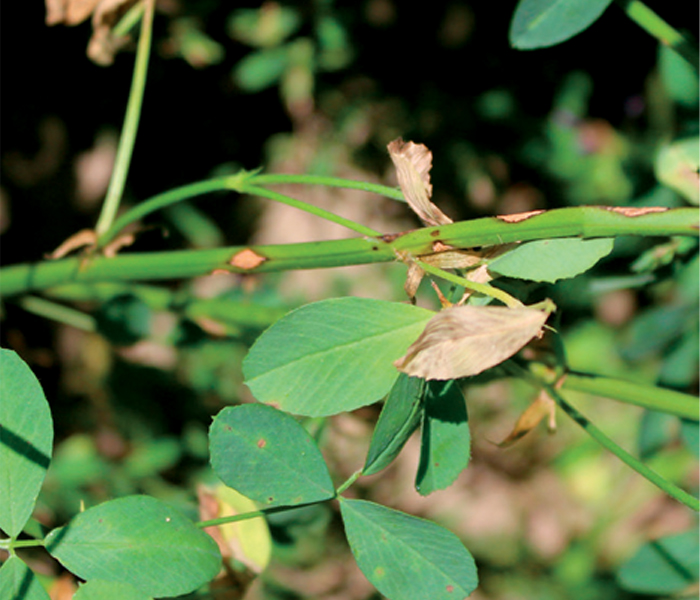Alfalfa Diseases
The combination of healthy roots and healthy stems lead to higher alfalfa yield potential. Below ground, alfalfa roots gather water and nutrients. Above ground, stems and leaves produce and transport plant energy to make valuable forage. Diseases such as Aphanomyces root rot and Anthracnose can limit these plant processes.
Aphanomyces Root Rot
- Infects roots; causes stunting, reduced nodulation, and poor root development in seedlings.
- Commonly found in soils that are saturated, poorly drained, compacted or have limited water dispersal.
- Visual symptoms can include gray, water-soaked roots, yellowed cotyledons, and stunted growth that can result in limited yield production or stand failure.
- Multiple races have been identified in the Midwest, East and areas of the Pacific Northwest.
- The dark green areas of the map indicate soils that are more likely to cause a significant economic impact.
- HVX MegaTron, RR AphaTron 2XT, Rebound AA, and new LegenDairy AA have high resistance to Aphanomyces Race 1, Race 2, and enhanced multi-race1 (previously known as Race 2/3) root rot disease - a unique new industry leading disease package.
Anthracnose
- A severe stem and crown fungal disease that causes defoliation.
- Multiple races can be present in late season and occurs aggressively during warm, moist conditions.
- Race 1 is commonly found and many commercial varieties have resistance to them. In severe situations, Anthracnose can cause yield losses of up to 25%.
- On susceptible plants, stems have large, sunken, oval to diamond-shaped lesions. Large lesions are tan colored with brown borders.
- Lesions can enlarge and join together to gridle and kill stems on a plant. Girdled stems may wilt suddenly and exhibit a “shepherd’s crook”.
- Dead stems are often scattered in the field with straw-colored to pearly white dead shoots. Infected crowns turn blue-black, produce fewer stems per plant, and the plant eventually dies.
- A new race of this disease has been identified in the Midwest, race 52, that overcomes standard variety resistances.
- HVX MegaTron, new Rebound AA, and new LegenDairy AA were developed for high resistance to multi-race Anthracnose disease including new Race 5.
Croplan® "AA" alfalfa varieties have built-in disease protection against both Aphanomyces root rot and Anthracnose. The AA varieties are higher in both yield potential and quality potential due to increased plant health, resulting in a higher ROI potential. Contact your local Premier agronomist today to get started using the newly launched Croplan® AA alfalfa varieties.




